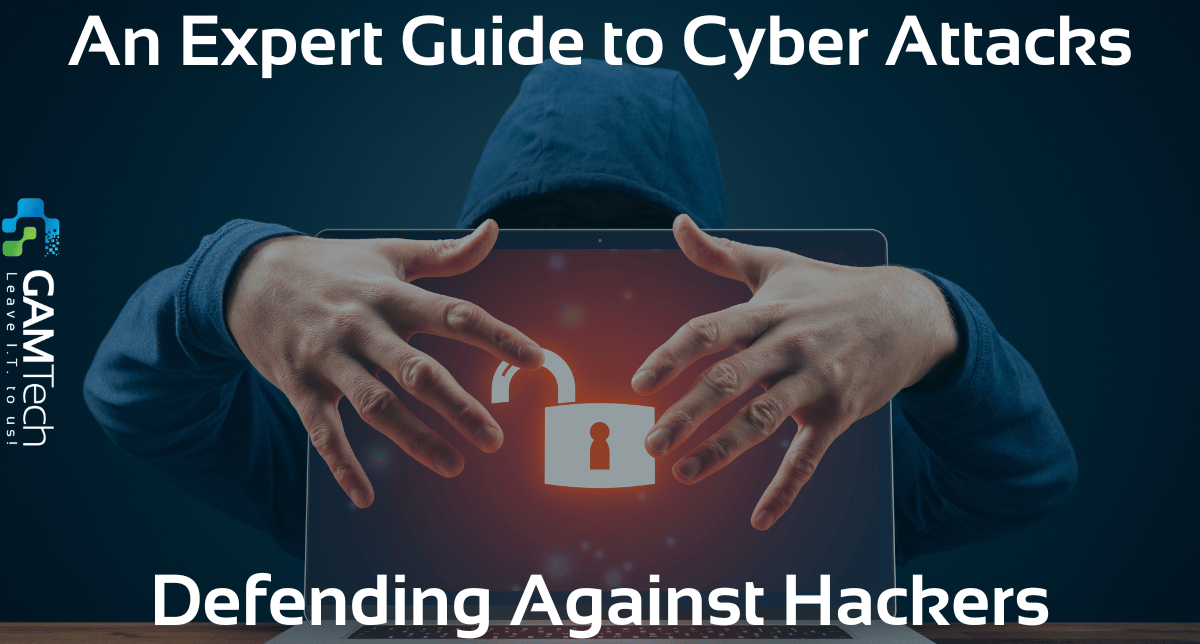Top 7 Data Breaches in History (Updated 2025)
In a world where our lives are increasingly digital, data breaches have become the stuff of modern nightmares. One poorly secured server, one...
5 min read
 Adrian Ghira
:
Sep 28, 2024 6:03:41 AM
Adrian Ghira
:
Sep 28, 2024 6:03:41 AM

In the modern, highly interconnected world, where people and companies depend more and more on technology to run their operations, it is imperative to comprehend hacker attacks. The frequency and sophistication of cyberattacks have increased dramatically, and hackers are now attacking companies of all kinds, from small startups to large multinationals. According to Cybersecurity Ventures, global cybercrime losses are expected to reach an astounding $10.5 trillion annually by 2025. This demonstrates how urgently strong cybersecurity defences are needed to ward against these growing threats.
This comprehensive guide aims to equip you with the knowledge needed to recognize hacker attacks, understand their various types and methods, and implement effective prevention strategies. By the end of this post, you will be better prepared to protect yourself and your organization from these pervasive threats.
A hacker attack refers to any unauthorized attempt to gain access to a computer system or network, typically for malicious purposes. It's essential to recognize the distinction between different types of hackers:
The history of hacking dates back to the 1960s, originally characterized by exploratory behaviours aimed at pushing technological boundaries. However, as technology evolved, so did the methods and motives of hackers, leading to increasingly sophisticated cyber threats. In the 1980s, hacking began to be associated with illegal activities, which have only intensified in the digital age.
To learn more about the importance of assessing your cybersecurity defences, check out our article on Cybersecurity Risk Assessments.
 Types of Hacker Attacks
Types of Hacker AttacksEducating yourself about the various types of hacker attacks is crucial for recognizing potential threats. Here are some of the most common methods employed by cybercriminals:
Phishing is a method where attackers impersonate legitimate entities to trick individuals into providing sensitive information, such as usernames, passwords, and credit card numbers. These attacks often take the form of emails, text messages, or social media communications. According to the Anti-Phishing Working Group, phishing attacks accounted for 83% of reported security incidents in 2021.
In 2021, a massive phishing campaign targeted Microsoft 365 users, tricking them into entering their credentials on a fake login page, potentially compromising thousands of accounts.
Malware, short for malicious software, encompasses a variety of harmful programs designed to disrupt, damage, or gain unauthorized access to systems. Common types of malware include:
Ransomware attacks involve hackers encrypting an organization's data and demanding payment for the decryption key.
How does it work? After gaining access to a network, the attacker deploys ransomware, encrypting files and rendering them inaccessible. A ransom note typically appears, outlining payment instructions, often in cryptocurrencies for anonymity.
The infamous WannaCry ransomware attack in 2017 affected over 200,000 computers in 150 countries, causing an estimated $4 billion in damages.
If you’re concerned about your network’s security and want to conduct an assessment, GAM Tech offers a thorough IT Audit service to help identify vulnerabilities.
DoS and DDoS attacks aim to make a network or service unavailable to users.
In a man-in-the-middle attack, a hacker intercepts communication between two parties, allowing them to eavesdrop, alter, or redirect the information exchanged.
How does it work? Attackers may use techniques such as packet sniffing to capture data transmitted over unsecured networks. This is particularly prevalent in public Wi-Fi environments.
SQL injection attacks exploit vulnerabilities in web applications by injecting malicious SQL queries into input fields.
This can allow attackers to view, modify, or delete database records. According to the Open Web Application Security Project (OWASP), a SQL injection is one of the top ten most critical web application security risks.
A zero-day exploit targets vulnerabilities in software that are unknown to the vendor or developer. These exploits are particularly dangerous as there are no patches available to mitigate the risk at the time of the attack.
In 2020, a zero-day exploit affecting Microsoft Windows was used to gain access to various systems globally, demonstrating how critical it is to keep software updated.
 How Hacker Attacks Work
How Hacker Attacks WorkUnderstanding the techniques hackers use to execute attacks is essential for building effective defences. Cybercriminals typically follow a general process:
Understanding these methods help organizations better prepare their defences against potential attacks.
Understanding these methods helps organizations better prepare their defences against potential attacks. For a more in-depth analysis and a tailored consultation on your company’s cybersecurity, consider an IT Service Consultation with GAM Tech.
The consequences of hacker attacks can be devastating for both businesses and individuals. The financial impacts can be staggering. According to IBM's Cost of a Data Breach Report, the average cost of a data breach has reached $4.35 million, a significant increase from previous years.
The reputational damage resulting from a cyberattack can be equally detrimental. Loss of customer trust can lead to decreased sales and brand loyalty. Furthermore, operational disruptions can severely impact productivity, as organizations work to recover from the attack.
Real Life Examples
To effectively defend against hacker attacks, consider the following prevention strategies:
If you fall victim to a hacker attack, immediate action is essential:
For more information on protecting your data, explore our Cybersecurity Services.
The threat of cyber attacks is ever-present, but with the right knowledge and defences, your business can stay protected. Understanding the tactics used by hackers is the first step, but taking action is crucial. Whether it's through regular IT audits, vulnerability assessments, or ongoing security consultations, investing in your cybersecurity strategy now can save you from costly breaches later.
For more resources and support in enhancing your cybersecurity posture, check out our blog on Essential Strategies for SMBs to Protect Their Data and the 27 Must-Know Cyber Security Statistics for Small Businesses.
Stay informed, stay secure, and let GAM Tech help you navigate the complexities of cybersecurity. From IT audits to tailored cybersecurity solutions, our expert team is here to safeguard your systems. Take the first step towards stronger security. Contact us today for a free consultation and stay ahead of cyber threats.
In a world where our lives are increasingly digital, data breaches have become the stuff of modern nightmares. One poorly secured server, one...

Small businesses are increasingly subject to cybersecurity and data protection regulations. Compliance is not only about avoiding fines—it is...

Introduction The halfway point of the year is the perfect time for small and medium-sized businesses (SMBs) to evaluate their IT infrastructure. Just...